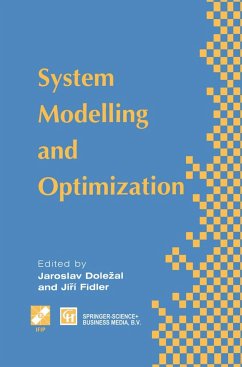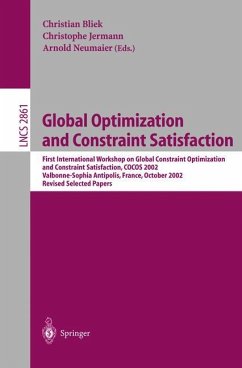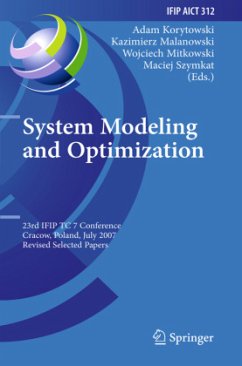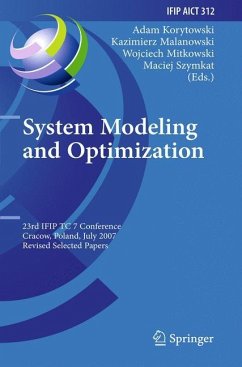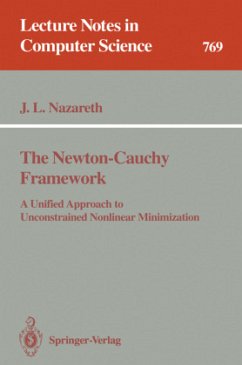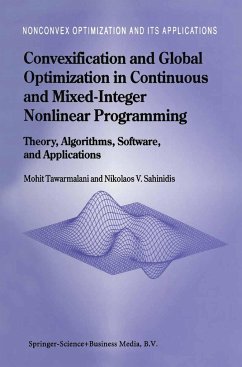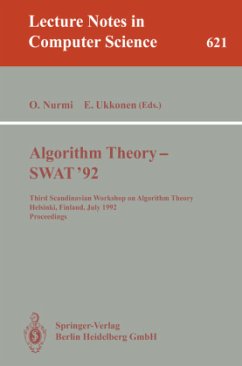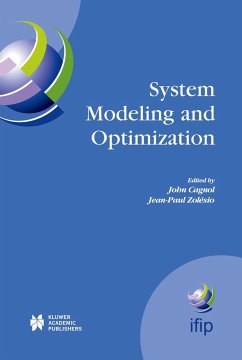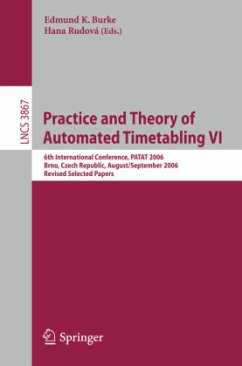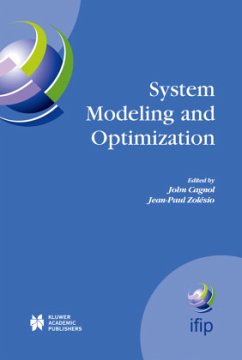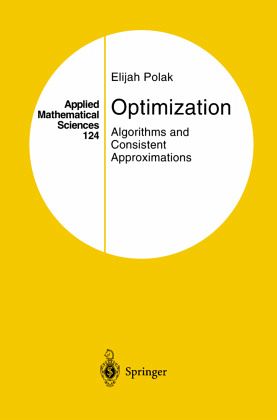
Optimization
Algorithms and Consistent Approximations
Herausgegeben: Polak, Elijah
Versandkostenfrei!
Versandfertig in 1-2 Wochen
252,99 €
inkl. MwSt.

PAYBACK Punkte
126 °P sammeln!
Although it has long been possible to make organic materials emit light, it has only recently become possible to do so at the level and with the efficiency and control necessary to make the materials a useful basis for illumination in any but the most specialized uses. The early electroluminescent panels and cells provided reasonably bright light, but required high operating voltages, produced only a narrow range of colors, and had severely limited lifetimes. Recent developments, however, make it possible to manufacture organic light-emitting devices that are thin, bright, efficient, and stable and that produce a broad range of colors. This book surveys the current status of the field. It begins with an overview of the physics and chemistry of organic light emitting devices by J. Shinar and V. Savvateev. It then turns to the design of molecular materials for high performance devices (C. Adachi and T. Tsutsui) and a discussion of chemical degradation and physical aging (K. Higginson, D.L. Thomsen, B. Yang, and F. Papadimitrakopoulos). A. Dodabalanpur describes microcavity LEDs, and Y. Shi, J. Liu, and Y. Yang discuss polymer morphology and device performance. Various aspects of devices based on polyparaphenylenes are discussed in chapters by N.C. Greenham and R.H. Friend; by Chayet, Savvateeyv, Davidoff and Neumann; and by S. Tasch, W. Graupner, and G. Leising. The book concludes with a discussion of devices based on pyridine-containing conjugated polymers by Y.Z. Wang, D. Gebler, and A.J. Epstein.
This book deals with optimality conditions, algorithms, and discretization tech niques for nonlinear programming, semi-infinite optimization, and optimal con trol problems. The unifying thread in the presentation consists of an abstract theory, within which optimality conditions are expressed in the form of zeros of optimality junctions, algorithms are characterized by point-to-set iteration maps, and all the numerical approximations required in the solution of semi-infinite optimization and optimal control problems are treated within the context of con sistent approximations and algorithm implementation techniques. Traditionally, necessary optimality conditions for optimization problems are presented in Lagrange, F. John, or Karush-Kuhn-Tucker multiplier forms, with gradients used for smooth problems and subgradients for nonsmooth prob lems. We present these classical optimality conditions and show that they are satisfied at a point if and only if this point is a zero of an upper semicontinuous optimality junction. The use of optimality functions has several advantages. First, optimality functions can be used in an abstract study of optimization algo rithms. Second, many optimization algorithms can be shown to use search directions that are obtained in evaluating optimality functions, thus establishing a clear relationship between optimality conditions and algorithms. Third, estab lishing optimality conditions for highly complex problems, such as optimal con trol problems with control and trajectory constraints, is much easier in terms of optimality functions than in the classical manner. In addition, the relationship between optimality conditions for finite-dimensional problems and semi-infinite optimization and optimal control problems becomestransparent.





